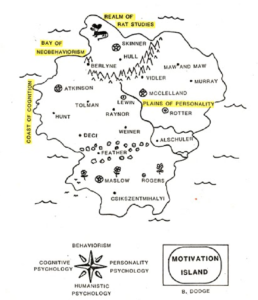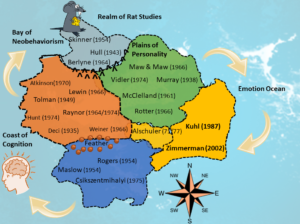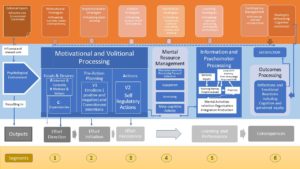Main Body
Theoretical Connections
Section Highlights
- The ARCS model was born from a complex synthesis of a variety of learning and motivation theories
- The model’s recent upgrades address some of its original limitations with respect to attention to emotions and intrinsic motivators as drivers
- What started out as ARCS has morphed into ARCS-V and most recently the MVP model based on continuous quality and theoretical alignment improvements. efforts
A thorough review of the literature on ARCS shows that John M. Keller was a deep generalist long before it became a LinkedIn buzzword. He was also a skilled connectivist thinker, who deftly brought together widespread nodes of information into a coherent multidisciplinary representation of what was scientifically known about motivation and learning.
Prior to the development of ARCS, research on motivation was scattered and largely construct specific. As an instructional designer, Keller desired a way to synthesize the research on these constructs to provide a model that could have maximum utility and practical application for instructors. He recognized that instructors often felt they could not influence motivation, part of that was related to time investment, and the other component was simply a mindset (Keller, 2009). This mindset could have come from the dominance of intrinsic motivation research at the time. Intrinsic motivation remains a powerful factor for student success and when it is present Keller felt adaptations to course delivery are unnecessary and can have an inverse and undesired effect (Keller, 2011).
In addition, Keller recognized that a model for student motivation needed to be complex enough to attend to what was already known about environmental, cognitive and affective motivational constructs. The original ARCS model combined schools of thought located in behaviorism, cognitivism as well as personality and humanistic psychology. Keller describes the theoretical alignment that was involved in the development of the ARCS model as “aperspectival” (Keller, 2009). In his most recent book, he describes in detail the vast amount of theories on motivation that he synthesized to consolidate the ARCS model. Taken in totality the original ARCS model represents what was known at the time about motivation related to physiological arousal, classical and operant conditioning, biological and social needs and drives, and a variety of personality theories. As an example, Dr. Keller realized then that the recipe for eliciting attention was not just one thing. It involved a complex mix of what neuroscience now provides a more complete understanding of including, automatic and spatial interest, personal curiosities, sustained attention and cognitive capacity or load (Hinshaw, 2018). Figure 1. shows a map drawn by one of Keller’s students, Dr. Bernie Dodge.

It is meant to graphically represent all of the theories that were considered in the development of the original ARCS model. Depicted in the North are the behaviorist theories of Skinner, Hull, and Berlyne. They are situated in the realm of rats because they were largely preclinical animal studies. They included experiments about behavior in general, later moving to behavior specific to learning. They focus on physiology and arousal studies on operant conditioning, classical conditioning and incentive or biological drive based motivation (Keller, 2009). In the West, there were emerging cognitive psychology studies. Dr. Dodge called this the coast of cognition. These were the theories that centered on the thinking processes and motivational messaging. In the South he grouped all the studies from the branch of humanistic psychology, many of these remain foundational theories today. They considered purposeful behavior and future orientation, and,thought-based goal direction. In the East on the plains of personality were the studies that dealt with the internal dimension of motivation including developmental influences, locus of control and IQ as influencing factors in motivation.
“it is possible to aggregate these theories into a higher level model that
increases the totality of their explanatory power “ (Keller, 2009, p. 9).
The progression of the ARCS model (as noted on the timeline and the video) continued through ARCS to ARC-V to MVP. This map is a renewed representation of the continued work Keller did on synthesizing existing research. You can watch a complete video of our interpretation of that evolution here. Figure 2. represents our reconceptualization of motivation island to include present-day theoretical alignment. Most importantly we wanted to depict the addition of the theories that support volition and self- directness, and situate all the conditions of the complex andscape of motivation as swimming in an ocean of emotion.

Present day the MVP model is a complex set of instructional and environmental conditions that are both affected by and may directly affect internal motivational constructs. The complexity of the newer model is depicted as Figure 3. The next section discusses how an instructor can leverage these conditions and presents a variety of existing tools.



Feedback/Errata